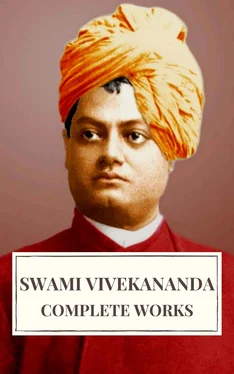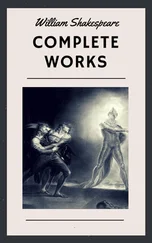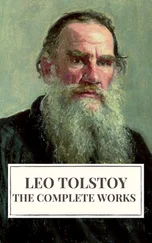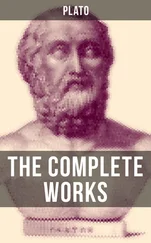What we call matter in modern times was called by; the ancient psychologists Bhutas, the external elements. There is one element which, according to them, is eternal ; every other element is produced out of this one. It is called Âkâsha. It is somewhat similar to the idea of ether of the moderns, though not exactly similar. Along with this element, there is the primal energy called Prâna. Prana and Akasha combine and recombine and form the elements out of them. Then at the end of the Kalpa; everything subsides, and goes back to Akasha and Prana. There is in the Rig-Veda, the oldest human writing in existence, a beautiful passage describing creation, and it is most poetical — “When there was neither aught nor naught, when darkness was rolling over darkness, what existed?” and the answer is given, “It then existed without vibration”. This Prana existed then, but there was no motion in it; Ânidavâtam means “existed without vibration”. Vibration had stopped. Then when the Kalpa begins, after an immense interval, the Anidavatam (unvibrating atom) commences to vibrate, and blow after blow is given by Prana to Akasha. The atoms become condensed, and as they are condensed different elements are formed. We generally find these things very curiously translated; people do not go to the philosophers or the commentators for their translation, and have not the brains to understand them themselves. A silly man reads three letters of Sanskrit and translates a whole book. They translate the, elements as air, fire, and so on; if they would go to the commentators, they would find they do not mean air or anything of the sort.
The Akasha, acted upon by the repeated blows of Prana, produces Vâyu or vibrations. This Vayu vibrates, and the vibrations growing more and more rapid result in friction giving rise to heat, Tejas. Then this heat ends in liquefaction, Âpah. Then that liquid becomes solid. We had ether, and motion, then came heat, then it became liquefied, and then it condensed into gross matter; and it goes back in exactly the reverse way. The solid will be liquefied and will then be converted into a mass of heat, and that will slowly get back into motion; that motion will stop, and this Kalpa will be destroyed. Then, again it will come back and again dissolve into ether. Prana cannot work alone without the help of Akasha. All that we know in the form of motion, vibration, or thought is a modification of the Prana, and everything that we know in the shape of matter, either as form or as resistance, is a modification of the Akasha. The Prana cannot live alone, or act without a medium; when it is pure Prana, it has the Akasha itself to live in, and when it changes into forces of nature, say gravitation, or centrifugal force, it must have matter. You have never seen force without matter or matter without force; what we call force and matter are simply the gross manifestations of these same things, which, when superfine, are called Prana and Akasha. Prana you can call in English life, the vital force; but you must not restrict it to the life of man; at the same time you must not identify it with Spirit, Atman. So this goes on. Creation cannot have either a beginning or an end; it is an eternal on-going.
We shall state another position of these old psychologists, which is that all gross things are the results of fine ones. Everything that is gross is composed of fine things, which they call the Tanmâtras, the fine particles. I smell a flower. To smell, something must come in contact with my nose; the flower is there, but I do not see it move towards me. That which comes from the flower and in contact with my nose is called the Tanmatra, fine molecules of that flower. So with heat, light and everything. These Tanmatras can again be subdivided into atoms. Different philosophers have different theories, and we know these are only theories. It is sufficient for our purpose to know that everything gross is composed of things that are very, very fine. We first get the gross elements which we feel externally, and then come the fine elements with which the nose, eyes, and ears come in contact. Ether waves touch my eyes; I cannot see them, yet I know they must come in contact with my eyes before I can see light.
Here are the eyes, but the eyes do not see. Take away the brain centre; the eyes will still be there, as also the picture of the outside world complete on the retinae; yet the eyes will not see. So the eyes are only a secondary instrument, not the organ of vision. The organ of vision is the nerve-centre in the brain. Likewise the nose is an instrument, and there is an organ behind it. The senses are simply the external instruments. It may be said that these different organs, Indriyas, as they are called in Sanskrit, are the real seats of perception.
It is necessary for the mind to be joined to an organ to perceive. It is a common experience that we do not hear the clock strike when we happen to be buried in study. Why? The ear was there, the sound was carried through it to the brain; yet it was not heard, because the mind did not attach itself to the organ of hearing.
There is a different organ for each different instrument. For, if one served for all, we should find that when the mind joined itself to it, all the senses would be equally active. But it is not so, as we have seen from the instance of the clock. If there was only one organ for all the instruments, the mind would see and hear at the same time, would see and hear and smell at the same time, and it would be impossible for it not to do all these at one and the same time. Therefore it is necessary that there should be a separate organ for each sense. This has been borne out by modern physiology. It is certainly possible for us to hear and see at the same time, but that is because the mind attaches itself partially to the two centres.
What are the organs made of? We see that the instruments — eyes, nose, and ears — are made of gross materials. The organs are also made of matter. Just as the body is composed of gross materials, and manufactures Prana into different gross forces, so the organs are composed of the fine elements, Akasha, Vayu, Tejas, etc., and manufacture Prana into the finer forces of perception. The organs, the Prana functions, the mind and the Buddhi combined, are called the finer body of man — the Linga or Sukshma Sharira. The Linga Sharira has a real form because everything material must have a form.
The mind is called the Manas, the Chitta in Vritti or vibrating, the unsettled state. If you throw a stone in a lake, first there will be vibration, and then resistance. For a moment the water will vibrate and then it will react on the stone. So when any impression comes on the Chitta, it first vibrates a little. That is called the Manas. The mind carries the impression farther in, and presents it to the determinative faculty, Buddhi, which reacts. Behind Buddhi is Ahamkâra, egoism, the self-consciousness which says, “I am”. Behind Ahamkara is Mahat, intelligence, the highest form of nature’s existence. Each one is the effect of the succeeding one. In the case of the lake, every blow that comes to it is from the external world, while in the case of the mind, the blow may come either from the external or the internal world. Behind the intelligence is the Self of man, the Purusha, the Atman, the pure, the perfect, who alone is the seer, and for whom is all this change.
Man looks on all these changes; he himself is never impure; but through what the Vedantists call Adhyâsa, by reflection, by implication, he seems to be impure. It is like the appearance of a crystal when a red or a blue flower is brought before it: the colour is reflected on it, but the crystal itself is pure. We shall take it for granted that there are many selves, and each self is pure and perfect; various kinds of gross and fine matter superimpose themselves on the self and make it multicoloured. Why does nature do all this? Nature is undergoing all these changes for the development of the soul; all this creation is for the benefit of the soul, so that it may be free. This immense book which we call the universe is stretched out before man so that he may read; and he discovers eventually that he is an omniscient and omnipotent being. I must here tell you that some of our best psychologists do not believe in God in the sense in which you believe in Him. The father of our psychology, Kapila, denies the existence of God. His idea is that a Personal God is quite unnecessary; nature itself is sufficient to work out the whole of creation. What is called the Design Theory, he knocked on the head, and said that a more childish theory was never advanced. But he admits a peculiar kind of God. He says we are all struggling to get free; and when we become free, we can, as it were, melt away into nature, only to come out at the beginning of the next cycle and be its ruler. We come out omniscient and omnipotent beings. In that sense we can be called Gods; you and I and the humblest beings can be Gods in different cycles. He says such a God will be temporal; but an eternal God, eternally omnipotent and ruler of the universe cannot be. If there was such a God, there would be this difficulty: He must be either a bound spirit or a free one. A God who is perfectly free would not create: there is no necessity for it. If He were bound, He would not create, because He could not: He would be powerless. In either case, there cannot be any omniscient or omnipotent eternal ruler. In our scriptures, wherever the word God is mentioned, he says, it means those human beings who have become free.
Читать дальше












